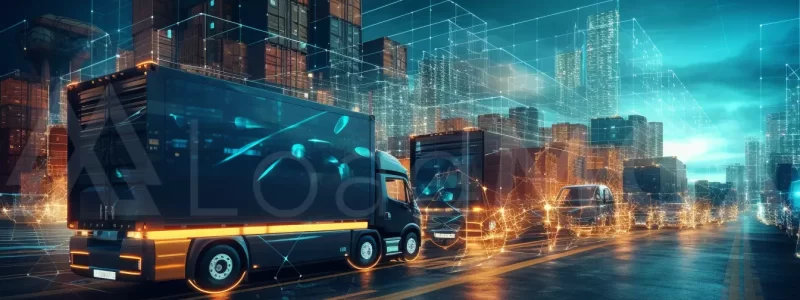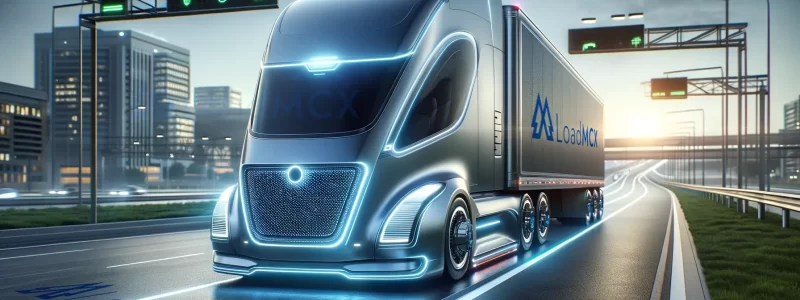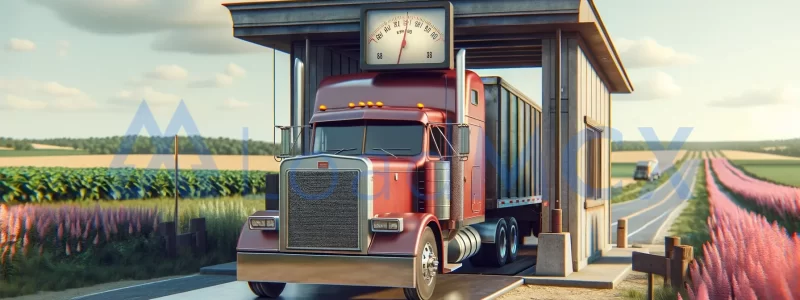
The Current Landscape of Trucking Safety
The trucking industry is a critical component of the global supply chain, but it’s not without risks. Accidents involving large commercial vehicles can have catastrophic consequences. Understanding the current safety landscape involves analyzing accident statistics, identifying common causes of truck-related accidents, and recognizing the challenges faced by drivers on long hauls.
Key Statistics and Trends
Trucking accidents, while less frequent than passenger vehicle accidents, carry significant consequences due to the size and weight of commercial trucks. The frequency of trucking accidents can vary based on numerous factors, including road conditions, traffic density, and driver experience. Despite stringent regulations and advanced safety technologies, these accidents still occur with alarming regularity. In the United States, for instance, the Federal Motor Carrier Safety Administration (FMCSA) reports thousands of trucking accidents each year, leading to substantial property damage, injuries, and fatalities.
AVG. Truck Accidents Per Year
AVG. Fatality Rate
Injured in Truck Accidents in 2022
The severity of trucking accidents is often much greater than that of standard vehicle collisions. Due to the massive size and weight of trucks, especially when fully loaded, the impact can be devastating. These accidents often result in severe injuries and a higher likelihood of fatalities compared to typical car accidents. The most common types of trucking accidents include jackknifing, where the trailer skews at an acute angle to the truck, and rollovers, which are particularly dangerous. Other frequent types include rear-end collisions, blind spot accidents, and under-ride accidents, where a smaller vehicle gets trapped under the truck.
Most Common Causes of Accidents
- Driver fatigue and health issues
- Mechanical failures and maintenance lapses
- Environmental and road conditions
- Challenges of urban vs. rural trucking

Technological Advancements in Trucking Safety
Technology is playing a pivotal role in enhancing road safety. From advanced driver-assistance systems (ADAS) to telematics, the integration of technology in trucking is not just about efficiency but also about saving lives.
The Role of ADAS
- Collision avoidance systems
- Lane departure warnings
- Adaptive cruise control
- Impact of ADAS on driver performance and accident rates
The integration of Advanced Driver-Assistance Systems (ADAS) in the trucking industry marks a significant leap towards enhancing road safety and reducing accident rates. Key components of ADAS, such as collision avoidance systems, lane departure warnings, and adaptive cruise control, play a crucial role in supporting truck drivers and minimizing the risk of accidents. Collision avoidance systems, for instance, use sensors and cameras to detect potential obstacles and automatically apply brakes to prevent collisions. This technology is vital in mitigating rear-end collisions, one of the most common types of truck accidents.
Lane departure warnings are another critical aspect of ADAS, designed to alert drivers when their vehicle begins to drift out of its lane unintentionally. This feature is especially useful in combating accidents caused by driver fatigue or momentary inattention. Adaptive cruise control, which automatically adjusts the truck’s speed to maintain a safe distance from the vehicle ahead, further enhances road safety by reducing the likelihood of speed-related accidents. These systems collectively contribute to a safer driving environment by compensating for human error and providing real-time assistance to truck drivers.
Telematics and Fleet Management
This technology not only enables fleet managers to monitor the location and status of their vehicles continuously but also provides critical insights into vehicle health. By leveraging real-time diagnostics, potential issues can be identified and addressed before they escalate into major problems, thereby reducing downtime and preventing accidents. This proactive approach to maintenance, known as predictive maintenance, is revolutionizing the trucking industry by significantly enhancing safety. By predicting and preventing mechanical failures, it directly contributes to a decrease in the incidence of breakdowns and accidents related to vehicle malfunctions.
The role of data analytics in this landscape cannot be overstated. By analyzing vast amounts of data collected from vehicles, data analytics helps in identifying patterns and trends that might pose risks. This deep understanding enables fleet operators to make informed decisions, optimize maintenance schedules, and implement risk mitigation strategies effectively. Data analytics thus plays a pivotal role in enhancing road safety, making it a critical tool in the trucking industry’s ongoing efforts to reduce accidents and improve overall efficiency.
Emerging Technologies
The advent of autonomous trucks presents both exciting prospects and significant challenges for the trucking industry. These self-driving vehicles, powered by cutting-edge AI and IoT technologies, promise to revolutionize trucking by enhancing safety, efficiency, and reducing human error. Autonomous trucks are equipped to handle long-haul journeys with precision, potentially reducing the number of accidents caused by driver fatigue or distraction. However, the road to widespread adoption is filled with challenges, including technological hurdles, regulatory concerns, and the need for extensive testing to ensure reliability and safety.
The implementation of Vehicle-to-Vehicle (V2V) communication is set to play a crucial role in this transformation. By enabling trucks to communicate with each other and with infrastructure, V2V technology can significantly reduce collisions and improve traffic flow. The integration of IoT and AI further boosts trucking safety, providing real-time data analysis and predictive insights that aid in preventive maintenance and risk management.

Regulatory Changes and Their Impact
Government regulations play a crucial role in maintaining and enhancing trucking safety standards but it’s not without its own set of drawbacks.
Recent Regulatory Changes
The trucking industry is undergoing significant changes due to the enforcement of Hours of Service (HOS) regulations and Electronic Logging Device (ELD) mandates. These regulations are designed to ensure driver safety and reduce fatigue-related accidents by strictly monitoring driving hours. ELDs provide an accurate, tamper-resistant means of logging driver hours, thereby promoting adherence to HOS regulations. This shift towards digital logging not only enhances compliance but also streamlines record-keeping and improves overall road safety.
In addition to HOS and ELD mandates, the industry is also adapting to evolving safety standards for truck equipment and maintenance, and environmental regulations that impact truck designs. These safety standards are crucial in maintaining the integrity and reliability of trucks, reducing the risk of accidents caused by equipment failure. Meanwhile, environmental regulations are prompting manufacturers to design trucks that are more fuel-efficient and emit fewer pollutants, contributing to a greener and more sustainable future. These regulatory changes collectively signify a move towards a safer, more environmentally conscious trucking industry, balancing operational demands with public health and safety concerns.

The Human Factor: Training and Wellness
At the heart of trucking safety is the human element. Ensuring that drivers are well-trained, healthy, and alert is crucial.
Driver Training and Education
The importance of driver training and education is paramount for ensuring road safety. Advanced training programs and simulations have become integral components of this educational process. These programs offer drivers realistic and challenging scenarios, enhancing their skills in maneuvering large vehicles, understanding traffic regulations, and reacting appropriately in diverse road conditions. By simulating real-life situations, drivers are better prepared for the complexities of actual driving, significantly reducing the likelihood of accidents.
Continuous education plays a crucial role in maintaining and updating drivers’ skills. As trucking technologies and regulations evolve, ongoing training ensures that drivers stay informed about the latest safety practices and compliance requirements. This continuous learning approach is vital for adapting to new challenges and innovations in the trucking industry. The impact of these educational initiatives on reducing accidents is clear: well-trained drivers are more confident, cautious, and aware, leading to safer roadways for everyone.
Driver Health and Wellness
Addressing driver fatigue and health issues is a critical aspect of ensuring safety in the trucking industry. Long hours on the road can lead to physical and mental exhaustion, significantly increasing the risk of accidents. To combat this, the industry is implementing various programs and initiatives aimed at promoting driver wellness. These initiatives range from providing education on the importance of adequate rest and healthy lifestyle choices to implementing policies that encourage regular breaks and limit driving hours.
The role of ergonomics in truck design is becoming increasingly recognized as vital for driver health and safety. Ergonomically designed trucks can greatly reduce the physical strain on drivers, who often spend extended periods sitting and operating the vehicle. Features such as adjustable seats, steering wheels, and controls that are within easy reach all contribute to a more comfortable and less strenuous driving experience. These ergonomic improvements not only enhance the well-being of drivers but also improve their focus and alertness, further contributing to road safety.

Future Directions in Trucking Safety
Looking ahead, the trucking industry continues to evolve, presenting both challenges and opportunities for enhancing safety.
Integrating Technology and Human Expertise
As the trucking industry moves forward, it faces a dynamic landscape of evolving challenges and opportunities, particularly in enhancing safety. A key area of focus is the integration of technology and human expertise. The future of trucking safety is increasingly leaning towards the utilization of AI and machine learning for predictive safety measures. These advanced technologies are capable of analyzing vast amounts of data to predict and prevent potential hazards, thus reducing the likelihood of accidents.
However, as the industry becomes more automated, the role of human oversight remains crucial. Skilled professionals are needed to interpret data, manage technological systems, and make informed decisions where automation falls short.
Safety Culture and Industry Collaboration
In parallel, there is a growing emphasis on fostering a culture of safety within trucking organizations. This involves creating an environment where safety is a fundamental value, embedded in every aspect of operations and decision-making. It requires continuous training, open communication about safety practices, and encouragement of feedback from all levels of staff. Additionally, the importance of collaborative efforts between the industry, government, and the public cannot be understated.
Such partnerships are also vital in advancing research, technology, and policies that further enhance road safety. Looking ahead, the trucking industry’s commitment to integrating technology with human expertise, nurturing a safety culture, and collaborating across sectors will be pivotal in navigating the path to a safer future.
Explore the Top Trucking Directory
Explore our vast trucking directory with over 42,000 carriers, featuring specialists in Flatbeds, Cargo Vans, Dry Vans, Intermodal, and more!

Continuously advancing road safety in trucking demands integrating technology, complying with regulations, and prioritizing the human element. These diverse strategies propels the industry toward a safer, more efficient future, safeguarding drivers and the public. The journey is extensive, yet achievable with dedicated efforts towards a safer trucking future.